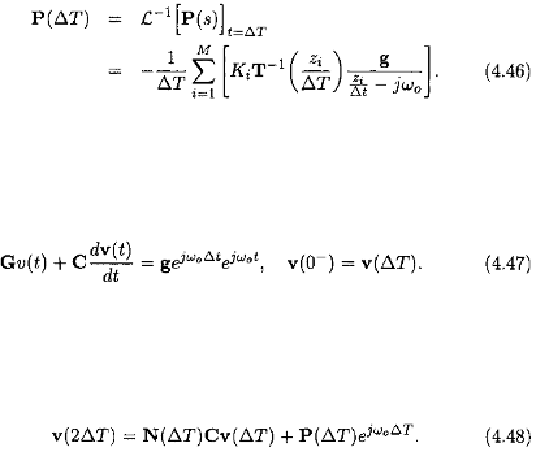Environmental Engineering Reference
In-Depth Information
and
In the second step, we reset the time origin to The input
becomes and the initial condition becomes
subsequently. The circuit in the second sub-interval is depicted
by
Following the similar steps as those for the first sub-interval, one can
show that the response of the circuit at the end of the second sub-interval
is given by
Continuing this process, we obtain the response of the circuit at the end
of the
sub-interval
The preceding algorithm computes the response of linear circuits over
a time interval of arbitrary length in a stepping manner, and is hence
termed the
stepping algorithm.
It is seen from (4.49) that
is
the transition matrix of the circuit as it links the present state
to the next state in the absence of the input. on
the other hand, quantifies the response of the circuit when the initial
state is zero, and is hence termed the zero-state vector. The response
of the circuit is completely defined by the transition matrix and the
zero-state vector.











Search WWH ::

Custom Search